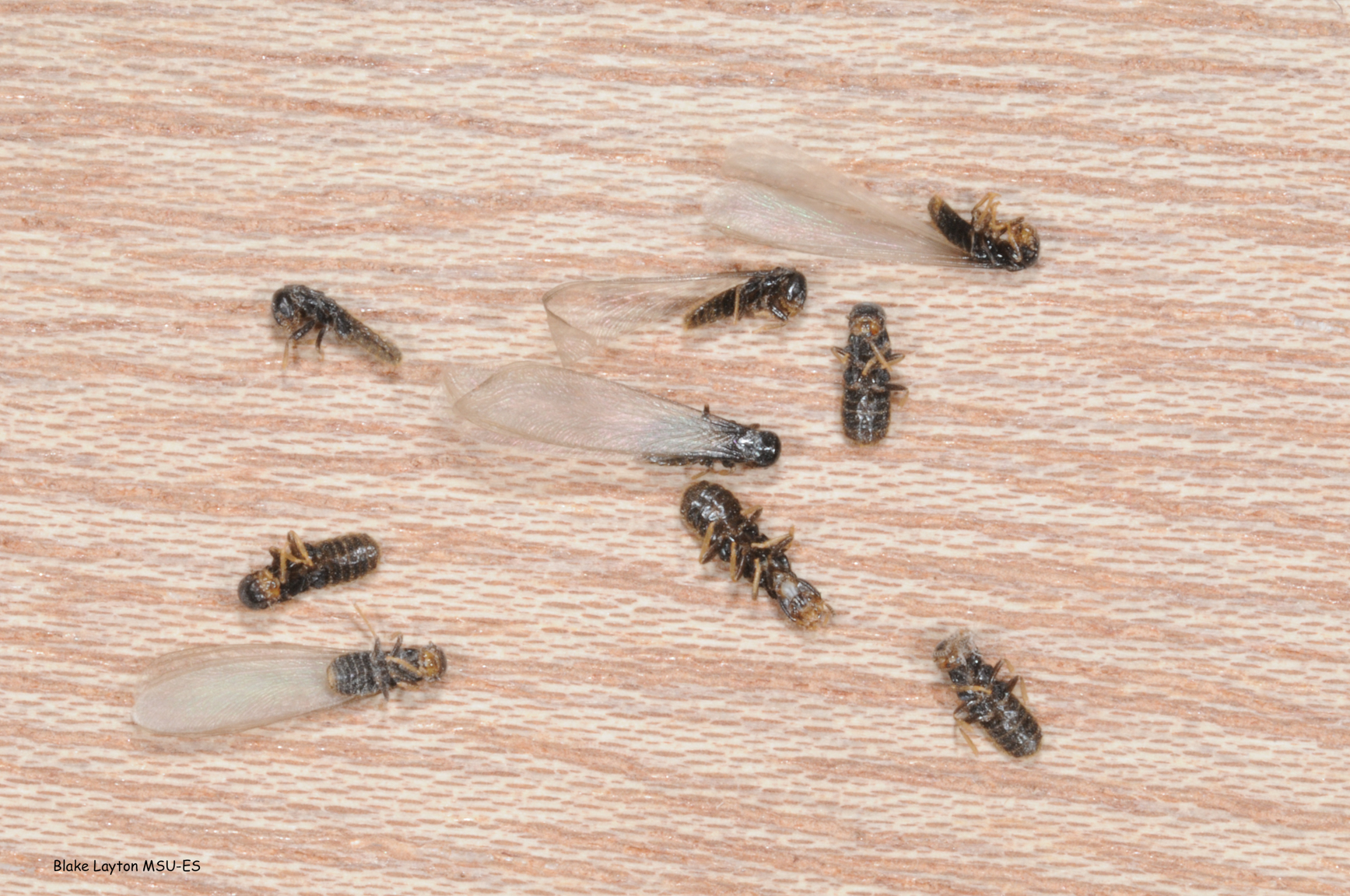Termite Time!, Vol. 9, No. 02
 Termite Time!
Termite Time!
Reticulitermes flavipes
Order: Blattodea (Isoptera)
Family: Rhinotermitidae
Every day is termite time if your house is infested, but you may not know it until you see swarmers. Eastern subterranean termites are active 24/7/365, but they only swarm once a year and this is why spring is sometimes thought of a termite time. Finding swarmers in a building is often the first indication many homeowners have that they have a termite problem.
Eastern subterranean termites are some of the most damaging insect pests in the state, annually causing millions of dollars in property damage, despite the millions of dollars that are spent each year to control them. These social insects play a beneficial role in our forests and landscapes, but when they invade houses and commercial buildings the situation is much different. An established termite colony can contain hundreds of thousands of termites. Most are workers, which are wingless, white and sightless. The black, winged insects you see here are swarmers, or reproductive termites (about 3/8 inches long including the wings). Termites shed their wings after swarming, and some of these have already done so.
Swarmers emerge only once per year, usually in the spring, and they are never alone. Usually there will be several hundred to a few thousand swarmers, all emerging simultaneously. Their goal is to mate and attempt to begin a new colony. But it is not the swarmers you need to worry about—it is the established termite colony from which they emerged. Termite colonies do not produce swarmers until they have been established for several years.
Finding eastern subterranean termite swarmers inside a building (either dead or alive) is a sure sign the building is infested and needs to be professionally treated. Seeing swarmers emerging from a stump or log in the lawn is not necessarily cause for concern, but it can still serve as a reminder to check your termite coverage (“When was the last time we had this building treated for termites and is the contract still in force?”). This is a good question to consider even if you do not see swarming termites this year. Termite control is best done preventively.
Eastern subterranean termites swarm primarily in the spring, but swarming can begin as early as January in coastal areas and continue into June in the northern portion of the state. Although termites only swarm one time per year, the hundreds of thousands of workers comprising a termite colony remain active year-round, eating 24 hours a day 365 days a year. Formosan termites swarm later in the year, around early May. Formosans are as, or more, damaging as Eastern Subs, and are more common in the southern parts of the state.
Control: Termite control is not a do-it-yourself project! You need to hire a licensed commercial pest control company to make sure your house is protected from termites. See Extension Publication 2568, Protect Your House from Termites for information on termite biology, how to hire a pest control company, and how to avoid conditions that increase risks of termite attack. For more information on the various methods available for controlling termites and the pros and cons of liquid termiticides vs termite bait stations see the Mississippi State University Termite Web Site .

